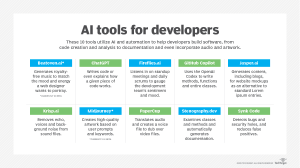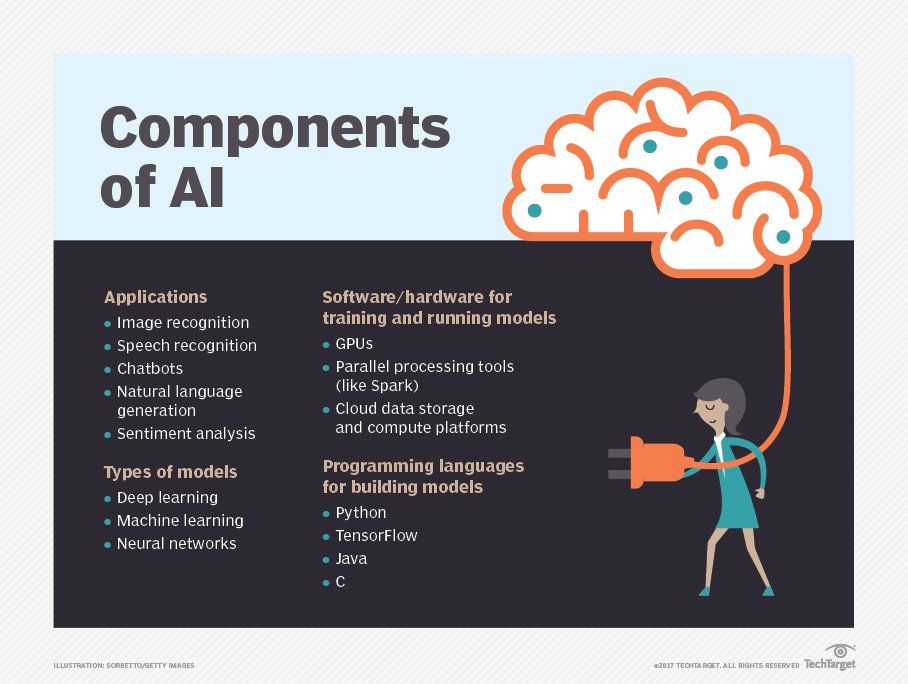AI tools list for developers
The power of artificial intelligence (AI) continues to grow.
The website Fortunes Insights predicts that the market size for AI will grow from $387.45 billion in 2022 to $1.39 trillion in 2029, a compound annual growth rate of 20.1%. That’s especially astounding, more so given the complexity involved to implement artificial intelligence.
AI has already changed the software development landscape, as new tools constantly emerge to assist developers on all levels of the software development stack, from web design to backend software development.
AI tools list for developers
Here’s a list of AI tools for developers that will change how software gets developed in 2023:
- chatGPT – This AI chat bot can write code or even explain how a given piece of code works.
- GitHub Copilot – This AI-based pair programmer uses the OpenAI Codex to write methods, functions and entire classes.
- Synk Code – Powered by the DeepCode engine, this static code analysis tool uses AI to detect bugs and security holes, and at the same time reduce false positives.
- Stenography.dev – This Chrome extension examines classes and methods and automatically generates documentation.
- Krisp.ai – Noisy audio is the bane of a multimedia designer’s existence. This AI tool removes echo, voices and background noise from sound files.
- Beatoven.ai – This AI tool generates royalty-free music to match the mood and energy a web designer wants to portray.
- Fireflies.ai – This sentiment analytics tool, currently in beta, listens in on standup meetings and daily scrums to gauge the sentiment and mood of your development team.
- Jasper.ai – This copywriting tool helps users generate blogs, but it can also create content for website mockups as an alternative to the standard Lorem ipsum entries.
- PaperCup – This AI language processing tool translates audio and also creates a voice file to dub over video files.
- Midjourney – This advanced AI tool, currently in beta, creates advanced, high-resolution artwork based on user prompts and keywords.
AI tools and platforms
So why are these systems smart?
AI systems inspect huge amounts of data to find patterns and themes that can be used to make decisions about a variety of situations. This pattern determination is called modeling.
Let’s say you give an AI program a billion pictures of different cats, and tell the program that each picture is an image of a cat. Then, the AI program creates a model of what a cat is. After the model is created, you can give the AI program any photo and ask, “Is this a cat?” If the photo conforms to the cat model, the AI program responds yes, otherwise the answer is no.
The AI program’s “smarts” come from the ability to learn from its inspection algorithms. Every input and output, each new photo and “yes” or “no” answer, helps the AI fine-tune its understanding of what is a cat.
The key to creating AI is having huge amounts of data and programs that know how to inspect and learn from all that data.
AI tools and data science
This is where data scientists come into play. Behind every piece of AI is a legion of data scientists — they play a major role creating the algorithms that drive the models that make AI smart.
There’s no magic in play. AI and its capabilities are largely the result to the hard work of data scientists. Without data scientists AI would be nothing more than science fiction fantasy.
A common fear is that artificial intelligence and automation will usurp many careers, from coders to cab drivers. However, continued R&D focused on AI will require more data scientists to create both the increasingly sophisticated models for AI technology to use, and more powerful applications powered by AI. As a result, the world is going to need more data scientists, not fewer.





